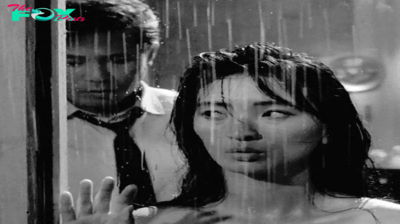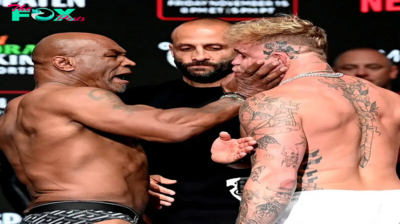Entertainment
Salonen’s majestic Bruckner Symphony No.4 brings excessive notes to turbulent instances in San Francisc – Seen and Heard Worldwide
 United States R. Schumann, Bruckner: Yefim Bronfman (piano), San Francisco Symphony / Esa-Pekka Salonen (conductor). Davies Symphony Corridor, San Francisco, 23.6.2024. (HS)
United States R. Schumann, Bruckner: Yefim Bronfman (piano), San Francisco Symphony / Esa-Pekka Salonen (conductor). Davies Symphony Corridor, San Francisco, 23.6.2024. (HS)

R. Schumann – Piano Concerto in A minor
Bruckner – Symphony No.4 in E-flat main, ‘Romantic’
I missed conductor Esa-Pekka Salonen’s performances of Bruckner’s Symphony No.6 final season, the one Bruckner he has performed throughout his two years as music director of the San Francisco Symphony. I used to be keen to listen to how issues may fare with the composer’s Symphony No.4 at a time when the way forward for the orchestra has change into a sizzling matter of dialog.
In March, Salonen introduced that he won’t proceed as music director after his contract ends in June 2025. His assertion stated that he and the board don’t agree on the orchestra’s plans, and a bristly debate has opened amongst insiders and abnormal concertgoers over simply what is going on. A press release from the musicians referred to as for the board of governors to reverse course, and there was no indication that the board has even begun a seek for a substitute.
Audiences have been enthusiastically supportive as Salonen has performed the orchestra’s June performances. At some concert events, banners have urged him to remain. Every time he picks up a microphone, as he did earlier than the Bruckner on Sunday, he will get a rousing response. He spoke to salute a number of longtime musicians (and the stage supervisor) who’re retiring after the June concert events. Their a long time of labor have ‘contributed to the DNA of what makes this orchestra what it’s’, he stated, including, ‘In that manner they reside on for so long as this orchestra exists’.
Within the efficiency that adopted, Salonen tempered his propensity towards rigorous adherence to the rating with a welcome willingness to nudge tempos in the hunt for further colours and versatile phrasing in what can come off as a rePetitious work. The musicians, for his or her half, appeared primed to react to each flick of the baton. It was a revelatory studying, an excellent, majestic mixture of precision and a kind of natural swelling and swerving that introduced the rating to life.
Bruckner’s symphonies usually check my endurance at instances. Not like Mahler, with whom he’s usually in contrast as a result of their symphonies are equally lengthy, Bruckner resisted tweaking particulars within the recurring phrases that pepper his symphonies. The fourth time intoning the identical brass hymn can get my eyes rolling.
Salonen subtly adjusted dynamics each time a rePetition got here round. He allowed tempos to loosen up a bit main into and out of those mileposts on the lengthy journey that Bruckner symphonies are. At each flip, he selected a really perfect tempo, one which allowed the sonics to bloom with none sense of dragging. The consequence was a recent, ear-caressing interpretation.
Bruckner revised the rating at the very least seven instances between the symphony’s debut in 1874 and the ultimate model in 1888. Salonen selected the 1880 model (in an version printed in 1953), through which the composer discarded his unique rapid-fire Scherzo in favor of a picturesque piece that offers the horn part an opportunity to create one in all music’s higher tally-ho moments. It was a good selection, largely as a result of the horn part was in nice type.
The brass, expanded to eight along with six horns, produced very good sound and readability, modifying textures and dynamics simply sufficient to carry freshness to every repetition of their fanfares, hymns and, sure, galloping hunt music. For his half, visiting hornist Jeffrey Truthful (principal horn of the Seattle Symphony) intoned the comfortable opening name with precision and beautiful tone, and dealt with the various returns of that theme with distinctiveness.
Salonen was particularly adept in bringing out contrasts, which abound on this symphony. The comfortable opening, the solo horn in opposition to a barely audible tremolo within the strings, regularly expanded right into a broad assertion that was shortly adopted by the sighs of a lighter, dancelike part. Likewise, the bouncy hunt music yielded properly to a delicate ländler within the Scherzo. These shifts between energy and tenderness, between urgency and hesitance, have been crucial in bringing depth and expression to the proceedings.
Among the many solos, principal flutist Yubeen Kim, affiliate principal clarinetist Matthew Griffith and affiliate principal oboist James Button made probably the most of their moments within the highlight. The Finale, one other motion that Bruckner refashioned to a major extent, saved rising to reverberant climaxes, the final pages reaching a elegant degree.
To open the live performance, pianist Yefim Bronfman downplayed any showoff fireworks and delivered a deft and eloquent efficiency of Robert Schumann’s Piano Concerto in E-flat. The give-and-take between orchestra and soloist was a delight. A fast tempo and wonderful communication with Salonen saved all of it sprightly, even the Intermezzo which made a pleasant breather between the outer actions.
Harvey Steiman
-

 Entertainment48m ago
Entertainment48m agoNatasha Rothwell on Her Memorable Firsts
-

 Entertainment6h ago
Entertainment6h agoFace Me and Other Korean Medical Crime Shows That are Must Watch
-

 Entertainment11h ago
Entertainment11h agoClassic Korean Movies Like Piagol to Add to Your Watch List
-

 Entertainment11h ago
Entertainment11h agoOver 60 Million People Tuned in to Watch Jake Paul vs. Mike Tyson
-

 Entertainment18h ago
Entertainment18h agoPopular Hudson Valley Italian Restaurant Addresses Closing Rumors
-

 Entertainment19h ago
Entertainment19h agoRHOBH’s Dorit Kemsley Addresses Viral Smoking Scene on Season 14 Premiere: ‘I Was Being Chased’
-

 Entertainment23h ago
Entertainment23h agoThe 10 Best Podcasts of 2024
-

 Entertainment1d ago
Entertainment1d ago‘RHOBH’ Star Dorit Kemsley Opens Up About Crumbling Marriage to PK: ‘Agreed to Separate’



























